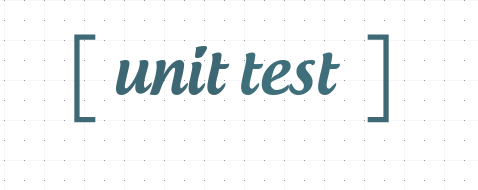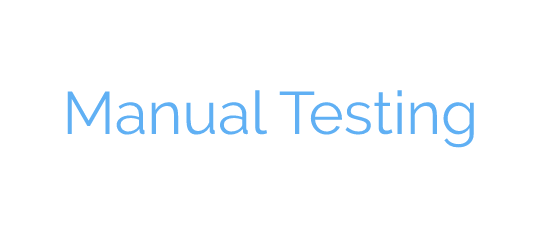Selenium Interview Questions and Answer 2019
Selenium is one of the most used automated test packages. Selenium was created to guide and inspire automation tests of practical aspects of web-based applications and also a wide range of browsers and platforms. By being in the open-source community, it has become one of the most accepted tools among detection specialists. Check out more selenium tutorials to learn selenium and automation testing.
Below are some of the latest selenium testing interview questions for experienced and freshers.
Selenium Webdriver Interview Questions[Selenium IDE and Selenium Grid]
Selenium could be used for the intentional, regression load test of the Internet-based program. The automation tool can be run for post-launch validation with continuous integration tools such as Jenkins, Hudson, Speedy Build or Cruise Control.
2. What are the Automation tests?
The automation test or Check Automation is a procedure to automate the manual procedure to examine the program/program under evaluation. Automation tests include the use of another s / w evaluation device that allows you to generate test programs that can be run over and over again and do not require any manual intervention.
3. What would be the advantages of automation tests?
The advantages of automation tests are:
Performance support for continuous test cases
Supports s / w detection of a large evaluation matrix
Power concurrent execution
Supports execution alone
Improves accuracy, thus reducing the malfunction created individually
Save time and cash.
4. What is the price of the selenium license per host?
Selenium is open-source software, released under the Apache 2.0 license and can be downloaded and used at no cost.
5. What is Selenium IDE?
Selenium IDE IS a Firefox add-on that records clicks, writing and other activities to perform test instances, which QA Tester can play in the Firefox browser or export to Selenium RC. Selenium IDE has the function of registering/reproducing the following attributes, step-by-step debugging and breakpoints, web page abstraction performance, an extensibility capability that allows the use of add-ons or personal extensions that extend the functionality of Selenium SDI
6. What are the limitations of Selenium IDE?
Selenium IDE has several excellent features and is a cost-effective and well-organized test automation application for building verification circumstances, at the same time, Selenium IDE does not have certain vital characteristics of a test program: conditional statements, loops, performance of registration, exception handling, performance reports, database detection, re-execution of failed tests and ability to capture screenshots. Selenium IDE is not compatible with IE, Safari and Opera browsers.
7. What exactly is the Selenium Remote-Control (RC) tool?
R. Selenium Remote Control (RC) is a solid solution for verification cases that need more than simple browser actions and linear execution. Selenium-Remote Control allows the development of complex test scenarios
8. When can I use Selenium IDE?
Selenium IDE is the simplest and simplest of all programs within the S / W program of the Selenium online course. Its reproduction function and documents make it extremely easy to understand with Mal's mini associates to any programming language. Selenium IDE is a great instrument for an innocent consumer.
9. What is Selenese?
Selenese is the vocabulary that will be used to publish test scripts in the Selenium in IDE.
10. Do you know different types of locators in Selenium?
The locator can be named as an address that recognizes a distinctly net component within the web page. Therefore, to recognize the network components correctly and we only have different types of locators in Selenium.
ID
ClassName
Name
TagName
LinkText
PartialLinkText
Xpath
CSS Selector
11. What is an Xpath?
Xpath can be used to find a net component according to its XML path. XML represents the extensible markup vocabulary and can be used to store, organize and transport information at random. Stores information in a set of integral values that can be very similar to HTML tags. Both are dialects of marking and, since they are categorized as an identical umbrella, Xpath can be used to search for HTML components.
Far behind finding components that use Xpath is the bridge between numerous components throughout the site and thus allowing a person to discover a feature with the guidance of another component.
12. What are the advantages of selenium over other automation tools?
Selenium is a free and open-source.
It has a large user base and helps communities.
It has cross-browser compatibility (Firefox, Chrome, IE, Safari, etc.)
It has amazing platform compatibility (Windows, Mac OS, Linux, etc.)
It is compatible with numerous programming languages (Java, C #, Ruby, Python, Pearl).
It has clean and regular repository developments.
It supports scattered tests.
13. Explain Selenium Suite?
Selenium Integrated Development Environment (IDE) Selenium IDE is a recording and playback application. It is distributed as a complement to Firefox.
Selenium Remote Control (RC) Selenium RC is a host that allows the user to create test scripts in the desired programming language. In addition, it allows you to run test scripts within the broad spectrum of browsers.
Selenium WebDriver WebDriver is not the same instrument as the many advantages of h-AS over Selenium RC. WebDriver communicates immediately with all browsers and uses its native compatibility to automate.
Selenium Grid Selenium Grid is used to distribute your test run across multiple platforms and environments at the same time.
14. What are the hat tests that Selenium can support?
Selenium supports the following varieties of tests:
Functional testing
Regression tests
15. What are the limitations of selenium?
Selenium supports testing of only Internet-based applications
Cellular applications cannot be examined with selenium
Captcha and barcode readers cannot be analyzed using Selenium
Reports can only be generated using third-party resources such as TestNG or Junit.
As Selenium is a completely free program, there is no ready vendor support, although the user can locate numerous help communities.
16. What is the difference between "/" and "//" in Xpath?
"/" In XPath it is used to produce Xpath with the full path, that is, XPath could be produced to start choosing from the initial file node.
"//": A bar is used twice to generate Xpath with a relative path, that is, the XPath could be produced to start choosing from anywhere in the file.
17. What are the flexibility of the Selenium test suite?
A. The selenium test set is highly adaptable. There are numerous ways to incorporate functionality into the Selenium framework to customize test automation. Compared to other test automation tools, it is the most powerful feature of Selenium. Selenium Remote Control support for various programming languages and scripts allows the test automation engineer to build whatever logic they want in their automated tests and work with a favorite programming or scripting language of their choice. In addition, the Selenium test package is an open-source project where the code can be modified and improvements can be submitted for your contribution.
18. What programming languages can you use in Selenium RC?
C #, Java, Perl, PHP, Python, Ruby
19. What test can selenium do?
Selenium is essentially used for the functional testing of web-based programs. It can be used for detection in the continuous integration environment. It is also really useful for agile tests
20. What are the pros and cons of using Selenium as a test tool?
Advantages: Free, simple and strong DOM (document object model) level tests can be used for continuous integration; Great fit with agile jobs.
Disadvantages: complicated configuration; sad error analysis; cannot test client-server applications.
21. Which browsers are compatible with Selenium Remote-Control?
Test automation can use the Firefox, IE 7/8, Safari and Opera browsers to run tests on Selenium Remote-Control.
22. What exactly is the price of Selenium test-suite?
The selenium test suite is a set of open-source software tools, free of charge.
23. How to start the browser using WebDriver?
This format can be used to set the browser:
WebDriver driver = new FirefoxDriver ();
WebDriver driver = new ChromeDriver ();
WebDriver driver = new InternetExplorerDriver ();
24. What is it possible for the United States to suggest using Selenium 1 and Selenium 2?
The Selenium RC and Selenium WebDriver tutorials, in a mixture, are commonly referred to as Selenium 2. Selenium RC is also only known as Selenium 1.
25. When can I use Selenium Grid?
Selenium Grid allows you to perform the same or different verification programs on several s / w and browsers simultaneously, therefore, to obtain extended evaluation performance, s / w evaluation in different environments and unexpectedly preserve the moment of performance.
26. Describe the specialized problems you had with Selenium Tools.
As with any other form of test automation tool such as Silk Test, HP QTP, Watir, Canoo Webtest Selenium allows you to record, edit and debug test cases. However, there are several problems that seriously affect the ability to maintain the test circumstances recorded, sometimes quality control engineers complain that it takes longer to maintain automated test cases than to perform manual detection, however, This can be a problem with all automatic test programs and most likely related to the poor design of the test frame.
Another problem is the complicated identification of an HTML element. If the IDs are generated automatically, the verification instances of the recorder may fail during playback. The alternative solution would be to use Xpath to discover demanded HTML elements. Selenium is compatible with AJAX without difficulties, but QA Tester must be constantly aware that selenium does not understand when the AJAX action is completed, so Click And Delay will not work. Instead, QA Tester could use the interrupt, but the impact of several pause instructions would really reduce the total test time to prove the circumstances. The best solution will be to use wait for Component.
27. What are the different types of WebDriver instances in selenium?
Firefoxdriver
InternetExplorerDriver
ChromeDriver
Safaridriver
Operadriver
AndroidDriver
IPhoneDriver
HtmlUnitDriver
28. What are the different types of waiting at Selenium?
There are two types of accessible delays Selenium Webdriver
Implicit wait
Wait explicit
Implicit wait: implicit delays are used to provide a predetermined wait time (30 seconds status) between each successive measurement/order of evaluation in all test software. Then, the next evaluation measure could work simply when 30 seconds have passed after executing the previous evaluation measure/order.
Explicit wait: Explicit delays are used to avoid performance until a specific condition is met or the optimal period has elapsed. Unlike implied delays, specific delays are asked for a specific example only.













![Latest Selenium Interview Questions [Updated 2019] Latest Selenium Interview Questions [Updated 2019]](https://blogger.googleusercontent.com/img/b/R29vZ2xl/AVvXsEiurKIZ53_uoMLjO-Ba0bWidMRDVVhnkqXT9h13xSMx4zldpFAs_CqQKTGBJPAUxc7rkVfxhflm6rT-rcf2kVRAiCkXv0gAmAVchHDgCIxY2r7nxnN7GrzvDnMK8AgYnAOhUibnJG2GLG4g/s72-c/SeleniumInterview.png)




